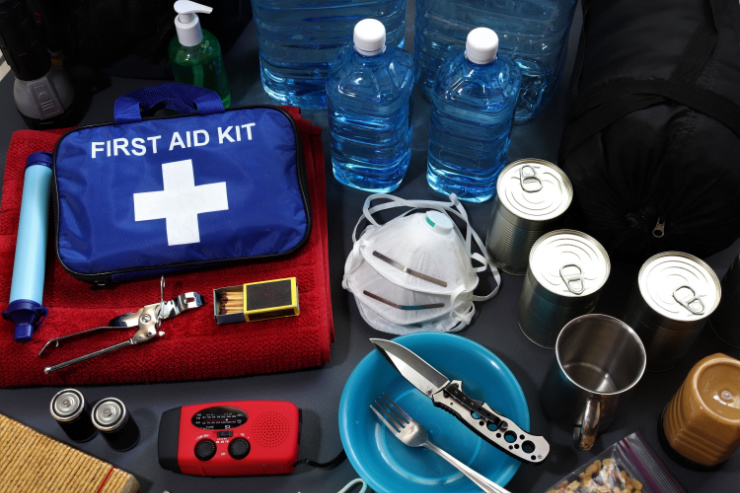It’s hard to predict the future, but it’s not hard to prepare for it, if you can beat inertia and take action. With a number of natural disasters hitting America in the last few weeks, and storms brewing in the Atlantic, it’s a great time to review your own preparation strategy, and be sure you have a “go bag” prepared in case you need to evacuate.
What Is a Go Bag?
A go-bag, loosely defined, is a bag you can carry on your back with enough essentials for three days time.
Why should it be something you can carry on your back? Because you may not always have a vehicle to travel in. But for the purposes of a typical hurricane evacuation, consider that you’ll be stowing the go-bag in the trunk of your car.
What Goes in the Go-Bag?
The short answer is, three days essentials. The longer answer is, there are an unlimited number of things you could put in a go-bag, and there are copious blogs and books out on building just the right kit. What really matters is that you have what’s important to you. As a baseline, the Red Cross has a good list of basics:
- Water: one gallon per person, per day (3-day supply for evacuation, 2-week supply for home)
- Food: non-perishable, easy-to-prepare items (3-day supply for evacuation, 2-week supply for home)
- Flashlight
- Battery-powered or hand-crank radio (NOAA Weather Radio, if possible)
- Extra batteries
- First aid kit
- Medications (7-day supply) and medical items
- Multi-purpose tool
- Sanitation and personal hygiene items
- Copies of personal documents (medication list and pertinent medical information, proof of address, deed/lease to home, passports, birth certificates, insurance policies)
- Cell phone with chargers
- Family and emergency contact information
- Extra cash
- Emergency blanket
- Map(s) of the area
It’s Not Just About You
The typical image of a survivalist is something like a bearded man by a log cabin in the woods wearing flannel and chopping firewood with a rifle slung across his back. But evacuees come in all shapes and sizes, ages, and abilities. People with medical conditions, kids, pets, or other concerns must keep them in mind when preparing. In addition to the basic kit above, the Red Cross suggests:
- Medical supplies (hearing aids with extra batteries, glasses, contact lenses, syringes, etc)
- Baby supplies (bottles, formula, baby food, diapers)
- Games and activities for children
- Pet supplies (collar, leash, ID, food, carrier, bowl)
- Two-way radios
- Extra set of car keys and house keys
- Manual can opener
Still Have Room in the Car?
The Red Cross has some more ideas if you still have room to carry more in your bag or your trunk:
- Whistle
- N95 or surgical masks
- Matches
- Rain gear
- Towels
- Work gloves
- Tools/supplies for securing your home
- Extra clothing, hat and sturdy shoes
- Plastic sheeting
- Duct tape
- Scissors
- Household liquid bleach
- Entertainment items
- Blankets or sleeping bags
Action Line: If you’re trying to put all this together after the evacuation order has been given, it’s not going to work. Stores are closed, and even Amazon Prime deliveries aren’t going to make it in time. Start putting your bag together today. The next step you need to take is knowing where you’ll evacuate to.
P.S. If you live in an area prone to wildfires, there are preparations more specific to you that you should consider.
Download this post as a PDF by clicking here.
E.J. Smith - Your Survival Guy
Latest posts by E.J. Smith - Your Survival Guy (see all)
- Rule #1: Don’t Lose Money - April 26, 2024
- How Investing in AI Speaks Volumes about You - April 26, 2024
- Microsoft Earnings Jump on AI - April 26, 2024
- Your Survival Guy Breaks Down Boxes, Do You? - April 25, 2024
- Oracle’s Vision for the Future—Larry Ellison Keynote - April 25, 2024
















